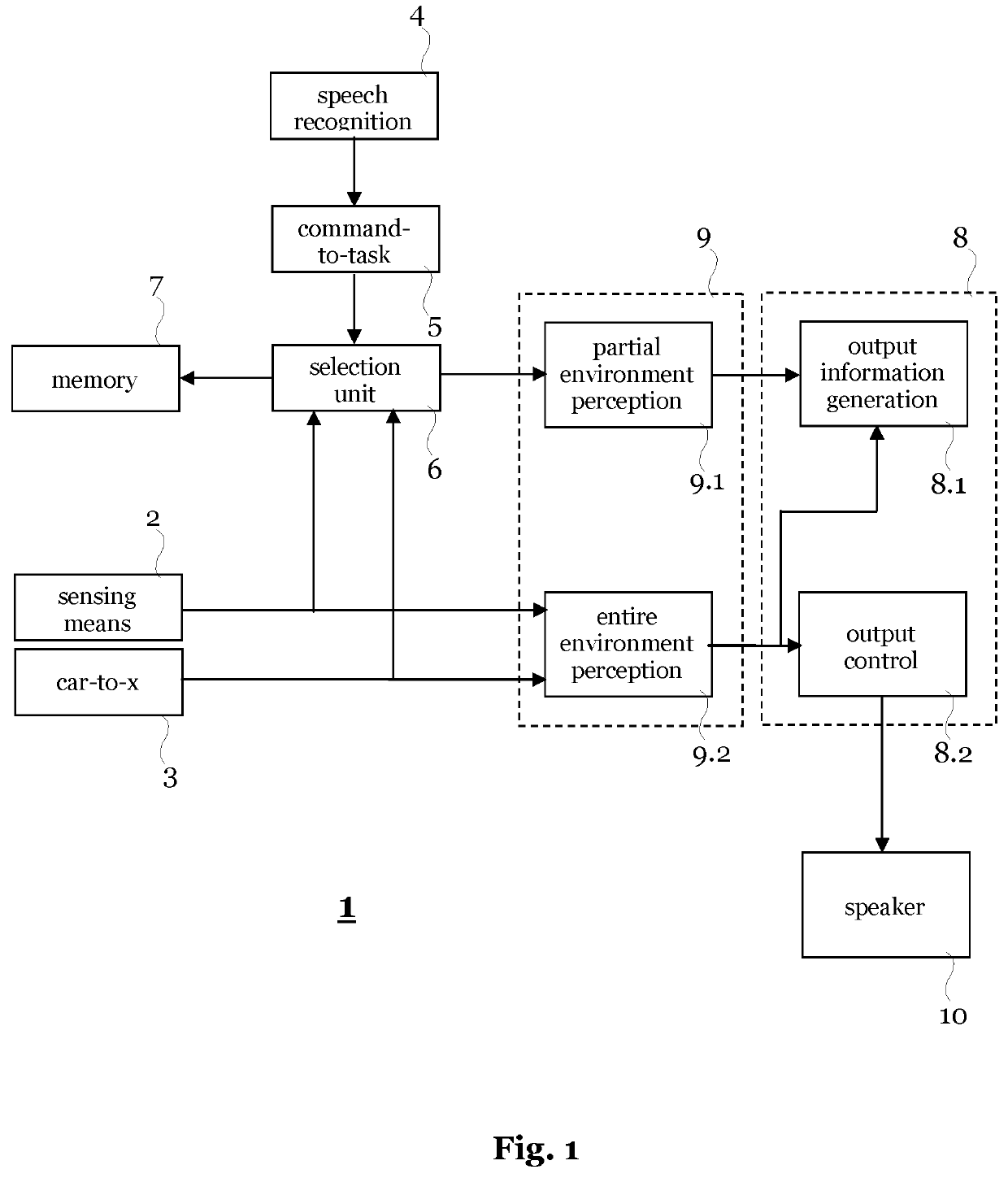Driving assistance method and driving assistance system with improved response quality for driver attention delegation
a technology of driver assistance and driver attention, applied in the direction of traffic control systems, transportation and packaging, instruments, etc., can solve the problems of unsatisfactory driving performance, 360° surveillance exceeding the attention a human driver may pay, and unsatisfactory driving performance, so as to improve the assisting of the driver in driving
- Summary
- Abstract
- Description
- Claims
- Application Information
AI Technical Summary
Benefits of technology
Problems solved by technology
Method used
Image
Examples
Embodiment Construction
[0030]The system and method according to the invention will now be explained in its general steps and elements with respect to FIG. 1. In FIG. 1 there is shown a sensing means 2 that consists of at least one sensor that is provided in the host vehicle. The sensing means 2 can of course comprise a plurality of sensors, even of different types that all together are capable of sensing physically the environment of the vehicle. Examples for such types of sensors can be cameras, radar sensors, laser range finders, ultrasonic sensors or time-of-flight sensors. The range of the environment which is sensed by sensing means 2 is in most cases much larger that what the host vehicle driver can attend. For example, the range that is attendable by the host vehicle driver is limited to his visual field and thus, opposite directions can be viewed by the host vehicle driver only after turning his head. Contrary, a plurality of sensors in the sensing means 2 can be active at the same time and thus, ...
PUM
 Login to View More
Login to View More Abstract
Description
Claims
Application Information
 Login to View More
Login to View More - R&D
- Intellectual Property
- Life Sciences
- Materials
- Tech Scout
- Unparalleled Data Quality
- Higher Quality Content
- 60% Fewer Hallucinations
Browse by: Latest US Patents, China's latest patents, Technical Efficacy Thesaurus, Application Domain, Technology Topic, Popular Technical Reports.
© 2025 PatSnap. All rights reserved.Legal|Privacy policy|Modern Slavery Act Transparency Statement|Sitemap|About US| Contact US: help@patsnap.com


